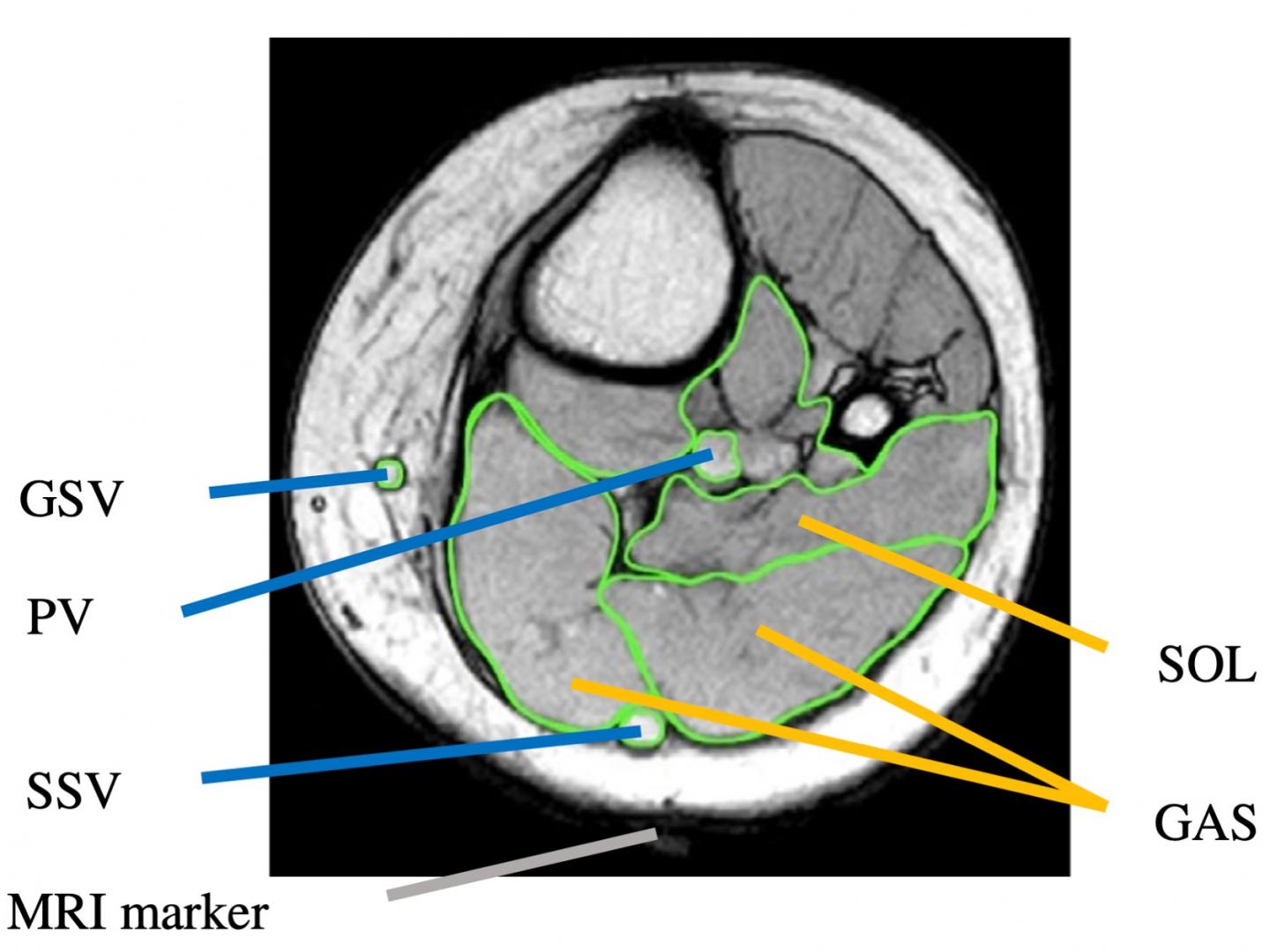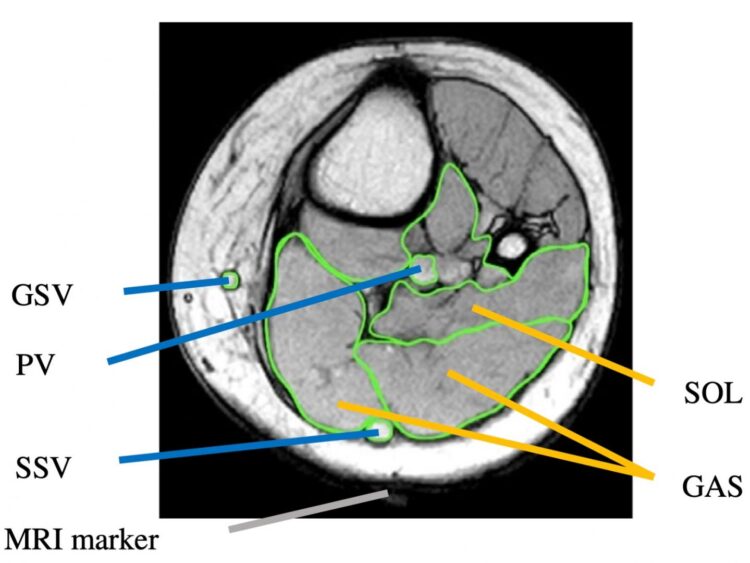
Credit: Kanazawa University
Chronic lower-limb edema (CLE) — the permanent accumulation of fluid in the leg — often occurs in elderly people. The condition leads to various physical and mental problems, including difficulty in walking or moving, fatigue and anxiety. One cause of CLE is the lack of physical activity, which is associated with a decrease in muscle pump action. The latter refers to the leg muscle’s acting as a blood pump: when contracted, the muscle squeezes veins together, forcing blood to flow. The question whether muscle pump action systematically changes with age has not been thoroughly investigated; now, Junko Sugama from Kanazawa University and colleagues have addressed this issue. In addition, they studied how leg posture affects muscle pump action.
For their study, Sugama and colleagues recruited a total of 76 healthy volunteers in three age categories: young, middle-aged and old, with average ages of 24, 47 and 72 years, respectively. They investigated blood flow in the subjects’ lower legs by means of magnetic resonance imaging (MRI). The latter is a technique enabling visualizing the morphology of muscles and veins at a given position along the leg. The scientists made MRI cross-section images at 21 positions in the calf region; combining the images made it possible to obtain information on blood flow in the leg.
To examine the effect of leg motion, subjects were asked to perform plantar flexion (moving the foot so that it becomes aligned to the leg) every 2 seconds during one minute. MRI images were recorded before and after the exercise. The procedure was performed for three different body positions: supine (lying with face and torso facing upwards), sitting and standing.
The scientists found that for all postures, blood flow increased after the exercise, implying that the latter promotes muscle pump action. The blood flow velocity increased most for the standing posture (90-135%), followed by the supine (55-90%) and sitting (30-40%) postures. Generally, no difference in muscle pump action was found for the different age groups — but Sugama and colleagues point out that the majority of their elderly volunteers had exercise habits.
The researchers suggest that measuring muscle pump action by nurses is useful for deciding whether intervention exercise is necessary to prevent CLE, but that MRI is not the most suitable tool for doing so — an easier device allowing measurement at the bedside would be required.
Although additional studies need to be done, for example adapting the measurement equipment so that it can be applied to elderly people with reduced walking ability, the scientists could conclude that for their set of subjects, “no difference was found in the changes in muscle pump action with age”, and that “elderly people may be able to maintain their muscle pump action when they have exercise habits”.
[Background]
Edema
Edema, sometimes spelt oedema, is the medical term for the accumulation of fluid in tissue, resulting in local swelling. It occurs most often in the legs or arms. General symptoms include the swollen area to feel heavy, skin feeling tight, and junctures being hard to move. The work of Junko Sugama from Kanazawa University and colleagues addresses an aspect of chronic edema in the lower limb (leg); they looked at whether leg muscle pumping capability changes with age, and whether exercise habits can prevent chronic edema in the leg.
Magnetic resonance imaging
Magnetic resonance imaging (MRI) is an imaging technique widely used in medicine for obtaining images of physiological process and the anatomy of the body. Images are generated by applying strong magnetic fields, magnetic-field gradients and radio waves. The underlying physical principle is that certain atomic nuclei, when subject to a magnetic field, can absorb the energy from the radio waves; detecting where this absorption happens results in a mapping of the absorbing atoms. In medical contexts, the absorbing nuclei are mostly hydrogen nuclei, and MRI scans provide mappings of water and fat in the body. A main advantage of the method is that it does not involve X-rays or ionizing radiation; disadvantages include discomfort for the person undergoing the imaging procedure. Sugama and colleagues used the method to map blood flow in the leg.
###
Media Contact
Tomoya Sato
[email protected]
Related Journal Article
http://dx.





